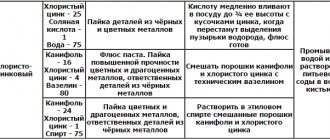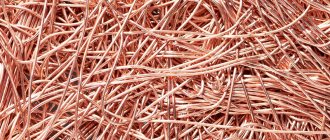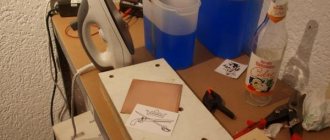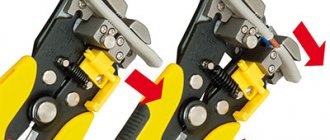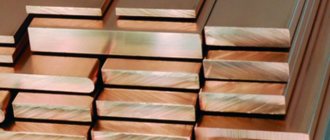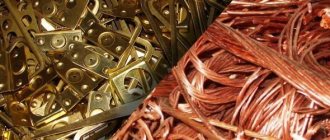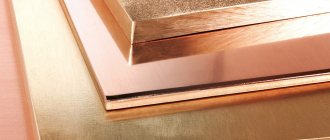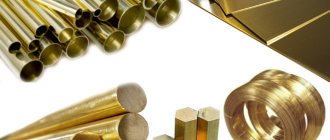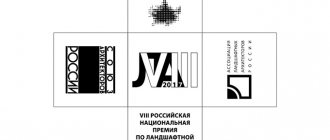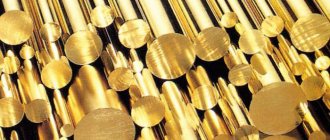How to cheat and make the engine heavier before scrapping it
In general, I decided to share with you my experience of how I started selling scrap metal.
It would seem that what is unusual here is that many of us, especially in our youth, handed over metal. But no, there are nuances and subtleties here. Buyers are especially interesting and bright personalities (who weigh your “catch” at the reception point and pay for it). It all started for me with the purchase of a “Karpaty” moped. It’s a good thing - you spend the whole evening fixing it, go for a ride and go back to repair it. It got to the point that, having saved up some money, I decided to completely change the engine. No sooner said than done. The new engine is already on the frame, and the old one is lying around idle. Why should good things go to waste if they can be recycled? Without thinking twice, I took him to the metal collection point (the regional center of Valdai is located next to me). It’s not realistic to sell the engine for spare parts, no one needs such junk in this condition, so after loading the engine with a total weight of 20 kilograms onto the trunk, I took it to sell it for metal. If anyone doesn’t know, the engine block is made of duralumin, which is considered a non-ferrous metal, and the inside is ordinary steel. The block weighs 4-5 kilograms, everything else is gears and shafts.
So I brought my “product”, I offer to buy it at the price of iron, but with an extra charge for duralumin, and the buyer refuses - either everything is at the price of iron, or disassemble and hand over everything separately. I was too lazy to bother with disassembly, but I didn’t want to give in, since at that time iron was accepted for 6 rubles, and duralumin for 50. Thus, I lose all the benefits. Without thinking twice, I take out a screwdriver, unscrew the screws, and prick the engine with a chisel in front of the inspector’s eyes. I break what has stuck with a hammer into pieces (duralumin chips easily) and hand it over to the receiver. Everything took no more than 6-7 minutes. You had to see his eyes, and he handed me, a 14-year-old boy, the well-deserved 300 rubles and said: “Keep me, kid, another 30 rubles for your intelligence.” I was encouraged by this, and I realized that I needed to do something about it.
My next idea was to sell the engine block from the Moskvich car. Realizing how much more profitable it was to sell duralumin, I decided to cheat. Having removed the upper part (where the spark plugs are screwed), I left the valve cover, and threw small stones inside through the holes, thus increasing the weight by about 2-3 kilograms, and, despite my young age, I thought of compacting the stones well so that they lay tightly and did not make unnecessary sounds. I ran to take my “treasure” there, but the receptionist turned out to be experienced, and after eyeballing the part, he said that it couldn’t weigh that much. He said either he would take it apart or he wouldn’t accept it.
Having loaded my “goods” onto the trunk, I went to another scrap metal collection point. There, a young guy (most likely with a strong hangover) silently weighed the part, gave the money and I, happy and with 300 rubles in my pocket, went home.
I was wondering how to sell the remaining part of the engine at a more profitable price. After doing the calculations, I decided to cheat. Having removed the pistons, he took out the crankshaft, put a broken cinder block inside, covered everything with sand, sealed it with pistons and invited his father to go sell it for metal. My father, becoming interested in my machinations, decided to stop by a neighbor who sold cattle feed and weigh the engine on large scales. In total, it came out to 240 kilograms (plus or minus, I don’t remember exactly).
A surprise awaited us at the “reception”, where the guy, having weighed the engine, said that there were 200 (!) kilograms, that is, he decided to inflate us by as much as 40 kg! The father began to argue and prove, he offered to move the engine in another place, and if there was more weight, then the receiver would have to pay double the price. “Okay, how long do you think it’s here?” the “hungover” guy couldn’t stand it. The father confidently answered: “250!” He silently paid us for 250 kilograms and we left. Then, separately, I also sold the crankshaft for scrap.
Today I work in a car repair shop in St. Petersburg, and when I get “unnecessary” engines from classics and other cheap cars, I remove everything that can be sold, fill the inside with sand and stones and sell it at the price of iron. I try to hand over at different reception points so as not to become familiar. So far I have never punctured. On average, I rent out about 2-3 engines per month. And so, I decided to calculate what the benefits are from selling such “cheating” engines. As a result, having counted the sale of removed crankshafts at the price of steel, the sale of gears and other things, as well as the weight that on average I add with stones and sand, it turned out... not much, not little - about two thousand rubles.
Once there was a case - I came to hand over the engine from the "six" (VAZ 2106), and the man receiving it said that the weight does not match the factory ones - admit what you stuffed inside. I refused, but he insisted and offered to take a sledgehammer and break it. But I refused, loaded it onto the trailer and drove on. At another point they accepted it without any problems. Such are the things. So this is quite a decent plus to my regular income, which is enough for me to buy gasoline. Such is the “cunning” saving.
Let's turn aluminum into copper!
This work was submitted to our “unlimited” article competition.
Are you haunted by the thought that your processor or video card is red-hot? There are only two options: kill yourself or cool off. I'll tell you about the second one. Moreover, I will not talk about a completely traditional cooling method. I'll tell you how to make copper from aluminum.
- Aluminum radiator – 1 pc.
- Copper sulfate - half a kilo is more than enough.
- Acid or alkali (preferably acid) - half a liter - more than enough (there will be a solution)
- Acid resistant container.
- A heating device (a gas stove is fine).
- An overclocker with his own brain (head), straight arms and a little free time.
(1) you can find it at a computer store or use your old one. In a flower or hardware store you will find (2). For (3) you can use acetic acid, which you can find in a bottle labeled “vinegar” or in a grocery store (I recommend the second option, since vinegar contains a maximum of 9% acid, while acid contains closer to one hundred). If you find a stronger acid (sulfuric, hydrochloric, etc.) – good, but be careful (I’ll tell you why later). (4) – can be glass or ceramic, but not plastic (it’s also better not to use metal). (5) should be in your kitchen at home. (6) – you (in theory), you can find yourself where you are now.
Why is it important to recycle copper waste?
Why donate copper?
Today, one of the most popular metals for production is copper.
It has excellent characteristics, namely plasticity, high thermal and electrical conductivity, which are valued in all economic spheres. Due to the fact that copper applications are expanding and the demand for it is constantly growing, it becomes reasonable to recycle copper scrap and use it for further production.
Copper scrap is a valuable raw material, classified as non-ferrous, expensive metal waste.
Scrap recycling is a profitable and useful process
How copper recycling protects the environment
Extracting copper from ore is a process that requires a lot of time, effort and money, not to mention the fact that it causes irreparable harm to the environment. In addition to this, do not forget that natural resources do not last forever, and sooner or later they may simply run out. Some scientists report that copper ore reserves will be depleted by 2050 . Thus, recycling copper scrap will help not only save resources, but also improve the environmental situation in two ways:
• reducing metal mining, which pollutes the environment;
• reducing the amount of scrap metal in landfills, whose decomposition also harms the environment.
Video about recycling copper elements from old TVs into frying pans
However, it is worth noting that by selling out-of-use copper products for scrap metal, you not only save the environment, but you can also make profitable money.
Where can I find copper for change?
An old non-ferrous metal product gets a chance for a new life. At PK Metal-Snab, copper purchases are carried out daily until 20:00. The company accepts non-ferrous metal from private suppliers and organizations. Offers high rewards per kilogram. To find out what the price for copper scrap is today and why you shouldn’t put off getting additional income until tomorrow, contact the manager, who has three collection points in Moscow or picks up a batch of used non-ferrous metal products at the supplier’s territory. Anyone who knows where to find copper is not left without a stable source of additional income.
| Type of copper | Price per kg, rub |
| Scrap copper glitter | 360-370 |
| A piece of copper | 350-360 |
| Copper mix | 335-345 |
| Scrap copper burner | 335-350 |
| Scrap tinned copper, burnt waste | 315-320 |
Who is responsible for accepting copper recyclables?
What is a reception point?
As noted above, obtaining copper through secondary processing is very effective. For this purpose, in almost every city or town there are special collection points for scrap metal , including copper, from where it is then supplied to processing plants.
Thanks to recycling, it becomes possible to produce new technology, parts or equipment without using natural materials.
The acceptance of copper scrap is usually carried out by so-called individual entrepreneurs or LLCs, specializing in the processing of recyclable materials. These can be small private firms, large companies, as well as various environmental organizations that have the necessary equipment, professional knowledge and experience in receiving, storing and transporting scrap. Scrap metal is also accepted by individual resellers, however, this method of disposal is not considered successful, since they usually do not have the appropriate license permitting this type of activity.
Only official points with a license have the right to receive, store and transport scrap metal
How to choose a collection point
The choice of collection point for the delivery of copper scrap metal should be approached responsibly. First of all, you need to study the metal receptacles that are located in the city. You can do this using the search engine on our website:
To view collection points in your city, use the “Select recyclables and city” button located on the right. You will be able to familiarize yourself with prices, addresses and telephone numbers, and based on this, choose the acceptance that suits you best. It should be noted that preference should be given to those reception points that are closest to your place of residence.
Main sources of copper
People use non-ferrous metals in everyday life, in production and for construction purposes. Copper conducts electricity and is therefore widely used in the manufacture of electrical appliances and wiring. The secondary market values this metal for its physical properties and offers its owners high rewards for purchasing it.
Sources of copper content:
- old tube TV, refrigerator, washing machine;
- winding of a starter, fluorescent lamp, transformer;
- small household items - Turks, teapots, samovars;
- electric motor (inside a cast iron or aluminum housing);
- parts of unsuitable wiring;
- souvenirs - figurines;
- furniture fittings – handles, supports, hinges.
Used copper products allow you to receive additional income and take care of improving the environmental situation in the capital. The process of assessing, weighing and accepting scrap does not take much time. The buyer pays the reward immediately and in full.
Where can I get copper for scrap metal?
If you are interested in generating income without work, go looking for products that contain non-ferrous metal.
A tube refrigerator is a device that produces up to 1.5 kg of copper. If the old refrigerator or TV cannot be returned for repair, disassemble the equipment into parts and sell the non-ferrous metal. There may be from 500 to 1000 grams of valuable raw materials. Where can I get copper for scrapping?
- A landfill is a place where used electrical appliances and old household appliances live out their life. In a day of searching you can find up to 150 kg of copper.
- Abandoned enterprises are areas where deposits of unused non-ferrous metal may remain.
- The outskirts of villages are places where spontaneous landfills form, where you can go to look for an old refrigerator or washing machine.
- Repair depots are sources for storing unnecessary cables and spare parts.
When going in search of scrap, do not forget about personal protective equipment. After collecting your used appliances, extract and sort the copper to get great rewards at the redemption point. "PK Metal-Snab" accepts scrap "piece", "shine", "mix" or "burnt". Highly values non-ferrous metal, which is ready for reuse after minimal processing.
List of prohibited scrap
Reception points are equipped with special devices that allow not only to determine the quality of the scrap metal being handed over, but also to identify copper scrap that is prohibited for delivery . This is done to understand the degree of safety and the possibility of further processing.
Even a large batch of copper scrap will not be accepted if the products are on the list of prohibited items for delivery
So, the following types of copper products cannot be scrapped:
• hermetically sealed containers, empty or containing residues of any substances;
• property belonging to another person without a power of attorney;
• military equipment and ammunition;
• scrap with an increased level of radiation;
• property owned by public utilities;
• Any stolen items.
How to Get the Best Price for Copper Scrap?
The cost of non-ferrous metal depends on the category, batch size and reception conditions. offers profitable cooperation to one-time and regular clients. Provides instant payment for purchasing a batch.
How to Get the Best Price for Copper Scrap?
- bring a large batch of waste non-ferrous metal products;
- scrap copper of the “shiny” type, which does not contain foreign impurities;
- arrange an appointment in advance and clarify the demand in the secondary raw materials market.
To find out the current cost, do not forget to indicate the volume of the scrap lot in a telephone conversation with the manager. Upon admission, the evaluator determines the category and weight to offer a high reward. The price is calculated individually. It is affected by type, weight, and the presence of traces of chemical or heat treatment.
New life for copper scrap metal, or how high-quality metal is made from recycled materials
Recycling process
After the collection point, copper scrap is sent to special processing plants. There, scrap metal is separated from debris and non-metallic elements on a special vibrating conveyor. After this, the purified copper is sent for further processing.
Depending on how the recycled copper scrap will be used, different processing methods are used:
• cryogenic cooling with air or magnetic separation;
• roasting and melting;
• acid-salt method and a number of others.
Production of copper sulfate
Recycled copper is also used to produce copper sulfate. This substance is actively used in crop production and medicine. In order to obtain it, copper is first smelted, removing impurities, and then granulated and quickly cooled. In this case, gases are released, and the copper itself becomes porous. Next, the copper is dissolved in sulfuric acid while blowing with air and, finally, the resulting copper sulfate is dried and crystallized.
The resulting copper sulfate crystals are then used to kill garden pests.
Copper cathode production
To obtain cathode copper M00, scrap metal containing different amounts of metal is separately melted, bringing it to the state of blister copper. After which, the resulting copper is poured into anodes and electrolytic refining is performed. The result is high quality cathode copper.
What to do if non-ferrous metal scrap turns out to be not copper?
Private sellers confuse non-ferrous metals. Sometimes they cannot distinguish copper from brass or bronze and are upset when they do not receive the desired income. Our customers also confuse pure metal from alloys that contain this material. The cores in the cable are not always made of copper - aluminum is also suitable for these purposes, which is valued lower when purchased.
If the non-ferrous metal scrap turns out to be not copper, our appraiser will definitely inform you about this. He will determine the quality of the metal and offer a good price for brass or bronze.
Regardless of the type and volume of the non-ferrous metal batch, we guarantee instant payment upon receipt and fair weighing of the batch. Come to the point or call our vehicle for removal of a large shipment.
Control and working scales, is there a difference?
How do people cheat on scales when selling scrap metal? It’s very simple, and the financial losses of the seller reach astronomical figures. To do this, they tighten the scales, as when selling vegetables at the market, hang magnets, weights, etc. It is easy to understand that you are being deceived at the reception. It is enough to first take measurements on control scales and compare the indicators with the weight when handing over scrap metal. The difference in numbers will allow you to really assess the situation and understand whether there is a body kit or not.
Scrap collectors working under a license and drawing up a package of accompanying documents care about the company’s reputation and are interested in fair weighing. This must be taken into account when solving the problem: where to sell scrap metal? Another way to avoid a pitfall is to invite an appraiser who will understand the quality and cost of raw materials prepared for delivery. Hiring a specialist is advisable if we are talking about tons of metal. It’s not worth doing this for the sake of 20-30 kg.
Note! It is more difficult to deceive if we are talking about scrap volumes of up to 10-50 kg. When you have to work with tens or hundreds of tons of metal, the receiver can underweight up to 20-25% of the cargo.
Advantages of PC Metal-Snab
For those who know how to find copper, distinguish it from other non-ferrous metals and clean wires from insulation, we offer a high reward for buying scrap. We appreciate the “brilliance” category very well. We accept scrap with traces of burning or tinning.
Advantages of PC Metal-Snab:
- three large equipped collection points in Moscow;
- your own transport for scrap removal in the capital and region;
- stable work schedule - from 9:00 to 20:00 seven days a week;
- purchasing non-ferrous scrap that turned out to be not copper;
- assessment, weighing and instant payment for the appointment.
To sell your copper stock from old refrigerators, TVs and cables, leave us a request online or by phone. We will meet you at the collection point or pick up a large shipment from the territory. We will offer a price from 330 rubles. per kg of copper scrap. We will help you get a high additional income.
How to distinguish copper from other metals
For most of us, knowledge about copper and its properties is limited to a school chemistry course, which is quite enough at the everyday level. However, sometimes there is a need to reliably determine whether a material is a pure element, an alloy, or even a composite material. The opinion that this information is needed only by those who are engaged in the acceptance or delivery of scrap metal is erroneous: for example, on amateur radio forums, topics are often raised about how to distinguish copper in wires from copper-plated aluminum.
Where to look?
In order not to waste time searching, you need to know in advance where to get the metal. Such places include:
- Fields. You can often find broken equipment there.
- Abandoned factories, often containing a lot of aluminum and copper.
- Car repair centers. Finding such an abandoned place is worth a lot. Where else to look for scrap metal? The convenience lies in the fact that all the broken parts are put in one place and sometimes just one bolt can pull out a kilogram.
- Dump. This place is suitable for those who are beginners and do not know where to search for copper for change. This is where you can easily learn to distinguish between types of metals, so as not to rent them out at the same price in the future.
- Abandoned landfill. In such places you can easily find shell casings, targets and dummies of equipment.
If you choose a field for searching, it is best to search with metal in the spring, so as not to collide with workers and not create problems for each other.
Briefly about element No. 29
Pure copper (Cu) is a golden-pink metal with high ductility, thermal and electrical conductivity. Chemical inertness in an ordinary non-aggressive environment is ensured by a thin oxide film, which gives the metal an intense reddish tint.
The main difference between copper and other metals is color.
. In fact, there are not so many colored metals: only gold, cesium and osmium are similar in appearance, and all elements included in the group of non-ferrous metals (iron, tin, lead, aluminum, zinc, magnesium and nickel) have a gray color with varying intensity of shine.
An absolute guarantee of the chemical composition of any material can be obtained only through spectral analysis. The equipment for carrying it out is very expensive, and even many expert laboratories can only dream of it. However, there are many ways to distinguish copper at home.
with a high degree of probability.
Copper production method
Obtaining copper, even in industrial conditions, is a very labor-intensive process:
- At the initial stage, the metal is crushed, after which it is cleaned of impurities of other rocks. After purification, the starting material is fired, after which a solid substance can be obtained - cinder, which in turn undergoes melting.
- After this procedure, matte is obtained, which contains up to 50% copper.
- The manufactured matte is enriched with oxygen, air blowing, and quartz flux.
- Only after these procedures can blister copper be obtained; it is melted and passed through an oxygen melt.
- Finally, the resulting material is treated with sulfur oxide, after which the percentage of copper is 99.9%.
Determination by color
So, we have before us a piece of unknown material that needs to be identified as copper. The emphasis on the term “material” rather than “metal” was made specifically, since recently many composites have appeared that are very similar to metals in appearance and tactile sensations.
First of all, we consider color. It is advisable to do this in daylight or “warm” LED lighting (under “cool” LEDs, the reddish tint changes to yellow-green). It is ideal if there is a copper plate or wire for comparison - in this case, errors in color perception are practically eliminated.
Important: old copper products can be covered with an oxidized layer (a greenish-blue loose coating): in this case, the color of the metal must be looked at in a cut or saw cut.
Determination by magnet
Color matching is a reliable but not sufficient method of identification. The second step of independent experiments will be a test with a magnet. Chemically pure copper is classified as diamagnetic - i.e. to substances that do not respond to magnetic influence. If the material under study is attracted to a magnet, then it is an alloy in which the content of the main substance is no more than 50%. However, even if the sample did not react to the magnet, it is too early to rejoice, since often an aluminum base is hidden under the copper coating, which is also not magnetic (this can be eliminated by filing or cutting).
Determination through chemical experiments
The reaction with concentrated nitric acid is indicative: if the latter is dropped onto the surface of a copper product, a green-blue color will occur.
A qualitative reaction to copper is dissolution in hydrochloric acid followed by exposure to ammonia. If a copper sample is left in an HCl solution until completely or partially dissolved, and then ordinary pharmaceutical ammonia is dropped into it, the solution will turn intensely blue.
Important: working with chemicals requires precautions. Independent experiments should be carried out in a well-ventilated area using personal protective equipment (rubber gloves, apron, goggles).
How to distinguish between copper and its alloys?
Copper alloys are widely used in industry. Over many years of research, it has been possible to obtain many materials with unique properties: high ductility, electrical conductivity, chemical resistance, strength (all depends on alloying additives). The most common are bronze (with the addition of tin, aluminum, silicon, manganese, lead and beryllium), brass (with the addition of 10-45% zinc), as well as copper-nickel alloys (nickel silver, cupronickel, copel, manganin).
Only bronze and brass are difficult to identify, since copper-nickel alloys differ significantly in color due to their low copper content.
Copper or brass?
Brass can contain from 10 to 45% zinc, a silver-gray metal. Naturally, the more zinc, the paler the alloy. However, high-copper brasses, in which the amount of additives does not exceed 10%, differ little in color from the copper sample. In this case, you can only trust your feelings: brass is much harder and more difficult to bend (for greater reliability, a comparison with a reference sample is advisable). You can try to remove the shavings: copper shavings will have a curl shape, brass shavings will be straight, needle-shaped. When the samples are placed in a solution of hydrochloric acid, no reaction with copper is observed, and a white coating of zinc chloride forms on the surface of the brass.
Copper or bronze?
Like brass, bronze is much stronger, which is explained by the presence of harder metals in the alloy. The most reliable test will be a “tooth test” - there is unlikely to be a trace of pressure left on the surface of the bronze.
You can also experiment with a hot saline solution (200 g of table salt per 1 liter of water). After 10-15 minutes, a copper sample will acquire a more intense shade than a bronze one.
Copper plating without bath
Using this method, metal coating can be applied to any materials. The essence is to “coat” (without direct contact) the workpiece with electrolyte using a special brush, the bristles of which are copper wires. The disadvantage of this technology is that it is unlikely to achieve high-quality copper plating of relief surfaces. At the very least, it will take a lot of time and effort to carefully process all the “cracks” and “potholes”.
Features of the preparatory stage
Brush. At home, it is made from stranded copper conductor. Removing the insulation and “fluffing” one end is not a problem. To make it more convenient to work, you should think about what to make the handle of the brush from. It will have to be moved along the surface of the sample, and given that the wires are flexible, such copper plating will be a test for the master. As an option, tie the “working part” to a pencil or the plastic body of a ballpoint pen. It's not hard to guess.
Tara. Before copper plating, the part is placed on any suitable container. For ease of use, it should not have high sides. The best option is a plate. Plus, there is a container that will contain the electrolyte. You will have to constantly lower the brush into it, so the choice here is not difficult. A glass will also work if the sample is small and you only need a little solution. Accordingly, all containers are pre-processed - washed, cleaned, boiled, degreased.
Assembling the circuit. Similar to the previous method. The brush functions as an anode, so it is placed to the “+” of the power supply, and the part to be coated is the cathode (to “–”).
Copper plating process
To ensure the continuity of the electrical circuit, electrolyte is poured into the container so that its level exceeds the height of the part. The brush, which is also periodically dipped in the solution (for this purpose it is poured into a separate container), must be moved over the sample. As a result, its surface is covered with a layer of copper. In essence, it is sprayed.
In what cases is it advisable to use this copper plating method?
- If the sample material is not conductive. For large dimensions of the part. It is unlikely that you will be able to select a bathtub of the appropriate size at home, for example, for a chandelier.
For those familiar with electrical engineering
Very often, copper cores from electrical cables are sold as scrap non-ferrous metals, and there are often cases when copper-coated aluminum is used in the production of electrical products. This material has a significantly lower density, but due to its irregular geometric shape, determining the volume to calculate the density is quite difficult. In this case, copper can be determined by electrical resistance (of course, if you have the appropriate instruments - a voltmeter, ammeter, rheostat). We measure the cross-section and length of the core, take instrument readings, and Ohm’s law will help you. Resistivity is a fairly accurate characteristic by which any metal can be identified with a high degree of reliability.
